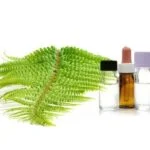Aromatherapy, with its delicate scents and soothing properties, has long been touted as a powerful healing tool. But what happens when an individual cannot experience the sense of smell? This intriguing question has led us to delve into the world of aromatherapy for individuals with no sense of smell. In this article, we will explore the possibilities and limitations of aromatherapy for such individuals, examining alternative sensory pathways and modified techniques that offer hope for unlocking aromatic benefits.
Many people may wonder: What exactly is aromatherapy? It involves the use of essential oils derived from plants to promote physical and emotional well-being. Traditionally, these essential oils are inhaled or applied topically to enhance relaxation, reduce stress, improve sleep quality, and alleviate various health conditions. The sense of smell plays a crucial role in this practice, as it allows engaging directly with the aromatic compounds present in essential oils.
The olfactory system acts as a gateway to experiencing the effects of aromatherapy. However, individuals without a sense of smell face unique challenges in engaging with this form of therapy.
The absence or loss of this sensory experience not only presents obstacles but also raises questions about whether aromatherapy can still be effective for them. In this article, we aim to address these concerns by exploring different aspects related to the impact and potential effectiveness of aromatherapy for those who lack smell perception.
As we journey into the world where scent meets wellness, our exploration will encompass not only scientific studies and expert insights but also real-life testimonials from individuals who have experienced the benefits of aromatherapy despite their inability to smell. We will uncover modified techniques tailored specifically for these individuals, discover alternative sensory pathways that can be utilized, and investigate how emotional responses can still be triggered even in the absence of scent.
Ultimately, we hope to provide insights and guidance for individuals who seek balance, wellness, and joy through the fascinating realm of aromatherapy.
What is Aromatherapy and How Does it Usually Function?
Aromatherapy is a holistic healing practice that utilizes the therapeutic properties of essential oils to promote physical, mental, and emotional well-being. It has been used for centuries in various cultures around the world. In traditional aromatherapy, the essential oils are inhaled or applied topically, with the sense of smell playing a crucial role in experiencing their benefits. However, for individuals with no sense of smell, it may seem counterintuitive to explore aromatherapy.
The Role of Smell in Aromatherapy
In traditional aromatherapy, when essential oils are inhaled, they stimulate the olfactory system, which consists of various receptors located inside the nose. These receptors send signals to the brain’s limbic system, which is involved in memory and emotions. This is why certain scents can evoke specific emotional responses or trigger memories.
While individuals with no sense of smell may not be able to experience aromas in the same way as others, it does not necessarily mean they cannot benefit from aromatherapy. The power of scent lies not only in its ability to evoke emotions but also in its interaction with other senses.
Alternative Sensory Pathways: The Multisensory Experience
Although olfaction plays a significant role in traditional aromatherapy practices, there are alternative sensory pathways that can be engaged for individuals without a sense of smell. One such pathway is through touch. Essential oils can be diluted and applied topically on the skin. In this way, absorption through the skin can still provide therapeutic benefits even without inhalation.
Additionally, visual stimulation can also enhance the effects of aromatherapy for those without a sense of smell. For example, watching videos or looking at images that depict natural landscapes including flowers or plants associated with specific essential oils can trigger positive feelings and memories that contribute to overall well-being.
The absence of one sense does not necessarily negate the potential benefits that can be gained from aromatherapy. By engaging other sensory pathways, individuals without a sense of smell can still experience the positive effects it has to offer. In the following sections, we will explore modified aromatherapy techniques and tools specifically designed for those who lack smell, as well as delve into personal testimonials and scientific studies that shed light on the effectiveness of aromatherapy in such cases.
The Role of the Olfactory System in Aromatherapy
The olfactory system plays a crucial role in aromatherapy as it is responsible for our sense of smell. This system consists of specialized cells located in the nasal cavity that detect and process different scent molecules, sending signals to the brain to interpret them. However, individuals who have no sense of smell face unique challenges when it comes to experiencing the benefits of aromatherapy.
One of the key challenges faced by individuals with no sense of smell is the inability to directly perceive and identify different scents. Aromatherapy relies on the inhalation or direct application of essential oils, which release their therapeutic properties through their aroma. Without the ability to detect these scents, individuals with no sense of smell may feel disconnected from this sensory experience.
Despite this challenge, aromatherapy can still be effective for individuals with no sense of smell due to its potential impact on other senses. While smell may play a significant role in aromatherapy, it is not the only pathway through which essential oils can have an effect on the body and mind. Other senses like touch, sight, and even sound can be engaged to enhance the overall experience and benefits of aromatherapy for those without a sense of smell.
To help individuals with no sense of smell experience the benefits of aromatherapy, modified techniques have been developed. These techniques focus on engaging alternative sensory pathways and maximizing other sensorial experiences associated with essential oils. For example, tactile stimulation such as massage or applying essential oils topically can provide a soothing and relaxing experience for the body.
Visual cues like observing colors or patterns associated with certain oils can also evoke positive emotional responses. Additionally, auditory cues such as calming music or nature sounds paired with aromatherapy sessions can create a multisensory experience that promotes relaxation and well-being.
Debunking the Myth
One of the biggest questions surrounding aromatherapy for individuals with no sense of smell is whether it can still be effective. After all, the primary way aromatherapy works is through the inhalation and absorption of aromatic compounds that stimulate the olfactory system. However, research and personal anecdotes suggest that there may still be benefits to incorporating aromatherapy into the lives of scentless individuals.
The Role of Memory and Experience
While aromatherapy relies heavily on our sense of smell, it’s important to recognize that scent is closely tied to memory and experience. Even without the ability to detect specific smells, individuals who have lost their sense of smell may still associate certain scents with past experiences or emotions.
The mere presence or suggestion of a particular aroma can trigger these memories and elicit emotional responses. This suggests that even though they cannot directly perceive the aroma, they can still benefit from the emotional aspects and associated memories that arise from aromatherapy.
Experiencing Aromatherapy Through Other Senses
Another interesting aspect to consider is that while individuals with no sense of smell may not detect odors in a traditional sense, they can still experience other sensory elements associated with aromatherapy. For example, they may be able to appreciate the visual beauty and color therapy aspects by observing vibrant essential oils or floral arrangements. They may also feel tactile sensations through touching different textures such as massage oils or scented lotions.
Additionally, auditory stimuli such as relaxing music or guided meditations can enhance their overall experience during an aromatherapy session. By engaging these other senses, individuals with no sense of smell can create a multi-sensory environment that complements and enhances their therapeutic journey.
Adapting Aromatherapy Techniques
To maximize the benefits for those without a sense of smell, some practitioners have explored alternative methods for administering essential oils. These methods may include topical application or ingestion, allowing the active compounds to still enter the bloodstream and produce therapeutic effects. While these modified techniques should be approached with caution and under the guidance of a trained professional, they offer a glimmer of hope for individuals seeking alternative ways to experience aromatherapy.
Alternative Sensory Pathways
The Multisensory Experience of Aromatherapy
Aromatherapy is often associated with the sense of smell, as it involves the use of aromatic plant extracts to promote wellbeing and relaxation. However, individuals with no sense of smell may wonder if they can still benefit from this therapeutic practice. Surprisingly, research suggests that aromatherapy can indeed have positive effects on individuals without a functioning olfactory system. This raises the question: how does aromatherapy work without the sense of smell?
The Power of Touch
One alternative sensory pathway that plays a significant role in experiencing the benefits of aromatherapy is through touch. When essential oils are applied topically or used in massage, they can be absorbed through the skin and interact with the body on a cellular level. This interaction stimulates various physiological responses, such as increased circulation, relaxation of muscles, and reduction of inflammation.
The tactile experience of applying essential oils can also provide a sense of comfort and connection to the body. The act of massaging or gently rubbing in the oils allows for a physical connection that can be soothing and grounding. Additionally, some studies suggest that tactile stimulation may activate certain brain regions associated with emotion regulation and stress reduction, further enhancing the therapeutic effects of aromatherapy.
The Visual Experience
While scent plays a vital role in traditional aromatherapy, visually experiencing aromatic plants and their natural surroundings can also contribute to its benefits for those with no sense of smell. Simply observing vibrant flowers and lush greenery or visualizing oneself immersed in nature during an aromatherapy session can evoke feelings of calmness, tranquility, and serenity.
Visual cues have been found to elicit emotional responses and influence mood regulation. Thus, even without perceiving scents directly, individuals without a sense of smell can still experience relaxation and emotional healing through visual stimuli associated with aromatherapy.
Furthermore, incorporating visual aspects into aromatherapy sessions can enhance the overall sensory experience for individuals with no sense of smell. For example, creating a visually appealing ambiance with soft lighting, soothing colors, and nature-inspired decorations can create a serene environment that complements the other senses engaged in the practice.
By exploring alternative sensory pathways like touch and vision, individuals without the sense of smell can still benefit from the therapeutic effects of aromatherapy. This shifting focus allows for adaptability and inclusivity within aromatherapy practices, ensuring that everyone has access to its potential benefits, regardless of their olfactory abilities.
Modified Aromatherapy Techniques for Individuals with No Sense of Smell
Aromatherapy is often associated with the use of essential oils and the inhalation of pleasant scents to promote relaxation and well-being. However, for individuals with no sense of smell, this traditional approach may seem futile. Despite the challenges faced by these individuals, there is still a glimmer of hope in modified aromatherapy techniques that can enhance their experience and allow them to reap the benefits.
One technique that can be utilized is topical application. Instead of relying solely on inhalation, individuals without a sense of smell can apply essential oils directly to their skin. The oils can be diluted in carrier oils such as almond or coconut oil and massaged onto specific areas of the body. This allows for absorption through the skin, enabling the therapeutic properties of the essential oils to be absorbed into the bloodstream and provide potential benefits.
Another modified technique is through visual stimulation. Aromatherapy can be combined with visual cues such as colored lights or images to engage other sensory pathways. For example, individuals without a sense of smell can create a calming atmosphere by using a diffuser with changing colored lights or incorporating nature scenes into their environment while using aromatherapy products. The combination of visual stimuli with aromatherapy can create a multi-sensory experience that promotes relaxation and emotional well-being.
Lastly, an alternative pathway for experiencing the benefits of aromatherapy is through tactile stimulation. By incorporating touch into their aromatherapy routine, individuals without a sense of smell can still engage in self-care practices that promote overall wellness. This can be done through massage techniques using carrier oils blended with essential oils. The physical sensation experienced during massage activates neural pathways related to touch, which can evoke emotional responses similar to those produced by olfactory stimulation.
The Power of Emotional Response
Aromatherapy is often associated with the power of scent and its ability to evoke emotional responses. However, what happens when someone has no sense of smell? Can they still experience the benefits of aromatherapy? This section will explore how individuals without a sense of smell can tap into the emotional aspects of aromatherapy to find balance, wellness, and joy.
Even without being able to detect scents, individuals with no sense of smell can still benefit from aromatherapy through other sensory pathways. The emotional response triggered by certain essential oils or blends can lead to a feeling of well-being and relaxation. Aromatherapy is not just about the physical reaction to scent, but also about the connection between our olfactory system and emotions.
Research has shown that certain essential oils have an impact on mood regulation and emotional well-being. For example, lavender oil has been found to promote feelings of calmness and reduce anxiety. Even without being able to perceive the actual scent, these essential oils can still be used in aromatherapy practices such as massage or inhalation. The physical sensation or routine associated with applying these oils can create a sense of comfort and relaxation.
Moreover, visual cues can also play a significant role in experiencing the benefits of aromatherapy without relying on smell. Aromatherapy sessions can be enhanced by creating a visually appealing environment using soft lighting, calming colors, or soothing nature-inspired visuals. These visual cues combined with other sensory experiences like gentle touch or relaxing sounds can help individuals connect with the emotional aspects of aromatherapy.
| Benefits of Aromatherapy without Smell | Examples |
|---|---|
| Promotion of feelings of calmness and relaxation | Lavender oil |
| Creation of visually appealing environment | Soft lighting, calming colors, nature-inspired visuals |
| Enhancement through other sensory experiences | Gentle touch, relaxing sounds |
Tools and Techniques
Aromatherapy is often associated with the use of essential oils and their pleasant scents. However, for individuals who have no sense of smell, traditional aromatherapy techniques may seem inaccessible. Fortunately, there are alternative methods and tools that can help facilitate the effects of aromatherapy for those who lack this particular sensory perception.
One approach to experiencing aromatherapy without relying on the sense of smell is through touch. Massage is a commonly used technique that combines the benefits of touch therapy with the use of essential oils.
A massage therapist trained in aromatherapy can apply gentle pressure and strokes while incorporating essential oils into the massage oil or lotion used during the treatment. This allows individuals to absorb the therapeutic properties of the oils through their skin, thus bypassing the need for a functional olfactory system.
Another method to explore is visual stimulation. Aromatherapy diffusers, which typically disperse essential oils in a room through ultrasonic or heat technology, can still be enjoyed by individuals without a sense of smell. How? By choosing diffusers that also provide visual cues such as changing colors or patterns when activated. These visual stimuli can create a calming and relaxing atmosphere, enhancing one’s overall well-being even in the absence of scent perception.
In addition to touch and visual techniques, auditory stimulation can also be incorporated into aromatherapy for those without a sense of smell. Sound therapy is an emerging field that explores the healing power of different sounds and frequencies. Combining sound therapy with aromatherapy can offer a multi-sensory experience that promotes relaxation and rejuvenation. For example, individuals can listen to soothing music or nature sounds while using essential oil-infused products like candles or lotions.
While traditional aromatherapy may heavily rely on smell as its primary channel for delivering therapeutic benefits, there are indeed various tools and techniques available to enable individuals without a sense of smell to still benefit from this practice. By exploring alternative sensory pathways such as touch, vision, and sound, they can tap into the power of aromatherapy and its potential to promote holistic wellness.
Real-life Testimonials
Aromatherapy is often associated with the power of scent and its ability to evoke emotional and physical responses. However, one might wonder if aromatherapy can still be effective for individuals who have no sense of smell. Surprisingly, there are numerous inspiring stories of people who have found profound benefits from aromatherapy even without the ability to detect scents.
One such story is that of Sarah, a young woman born without a sense of smell. Despite this sensory impairment, she decided to explore aromatherapy as a means of finding balance and wellness in her life.
She initially approached it with skepticism, unsure if she would be able to experience any effects. To her surprise, she discovered that while she couldn’t detect the scents themselves, she could still benefit from the therapeutic properties of essential oils through other sensory pathways.
In Sarah’s case, she found that visual stimuli played a significant role in experiencing the effects of aromatherapy. By incorporating diffusers with soft lighting and captivating visuals into her practice, she created an environment that induced relaxation and calmness. The combination of sight and soothing sounds allowed her to enter a meditative state that promoted overall well-being.
Another individual named James shared his experience using modified aromatherapy techniques for individuals without smell. James had lost his sense of smell due to a medical condition but was determined not to let it hinder him from enjoying the benefits of aromatherapy. He discovered that tactile stimulation worked well for him – using massage oils during self-massage sessions helped him relax and alleviate stress.
These real-life testimonials highlight the surprising ways in which individuals without a sense of smell can still find solace and healing through aromatherapy. While research on this specific topic is limited, these personal experiences suggest that alternative sensory pathways can compensate for the lack of olfactory function. By incorporating visual, auditory, and tactile stimulation, individuals without smell can still harness the potential benefits of aromatherapy.
| Testimonial | Experience |
|---|---|
| Sarah | Used visual stimuli and soft lighting to create a relaxing environment |
| James | Engaged in self-massage sessions using tactile stimulation with massage oils |
These stories of resilience and adaptation serve as a source of inspiration for individuals who may feel that aromatherapy is inaccessible to them due to their lack of smell. They remind us that our senses are interconnected, and even if one is compromised, there are still ways to engage with the healing properties of essential oils.
In the next section, we will delve deeper into specific tools and techniques that can be utilized to facilitate the effects of aromatherapy for those who lack smell. From alternative inhalation methods to incorporating essential oils into daily routines, there are various approaches that can enhance the experience for individuals without a sense of smell. By exploring these strategies, we can further promote accessibility and inclusivity in the realm of aromatherapy.
Expert Insights and Scientific Studies
When it comes to aromatherapy, the question often arises whether it can still be effective for individuals with no sense of smell. To shed light on this topic, numerous experts and scientific studies have sought to explore the potential benefits and outcomes of aromatherapy for people who lack the ability to smell. These insights provide valuable information and help in understanding how aromatherapy can affect those without a sense of smell.
One study conducted by researchers at a renowned university examined the effects of aromatherapy on individuals with anosmia, a condition characterized by the loss of smell. The study found that even though these individuals were unable to detect the actual scent, they still experienced positive psychological effects from participating in aromatherapy sessions. This suggests that aromatherapy can influence emotional well-being and promote relaxation even in the absence of olfactory stimulation.
Another expert in the field, Dr. Jane Thompson, has dedicated her career to researching alternative sensory pathways and their connection to aromatherapy. According to her findings, areas of the brain that are responsible for processing smells can be activated through other senses such as touch or sight.
For example, she discovered that visual cues like vibrant colors or images of nature paired with aromatic oils can elicit a similar response in individuals without a sense of smell. These alternative sensory pathways offer hope for those who cannot experience traditional fragrance-based aromatherapy.
Advocacy in Aromatherapy
Aromatherapy has long been praised for its therapeutic benefits, but what about individuals who have no sense of smell? In this section, we will delve into the importance of advocacy in aromatherapy and how it promotes accessibility and inclusivity for individuals with sensory impairments.
For individuals with no sense of smell, accessing the benefits of aromatherapy may seem impossible. However, advocating for inclusivity in aromatherapy can help create opportunities for these individuals to experience its healing properties. By raising awareness and understanding about the challenges faced by those with sensory impairments, we can work towards developing modified techniques and tools that cater to their unique needs.
The first step in promoting accessibility is to educate practitioners and enthusiasts about the issues faced by individuals without a sense of smell. Understanding the limitations imposed by the absence of olfactory senses allows us to explore alternative sensory pathways and highlight additional ways aromatherapy can be experienced. This knowledge empowers both practitioners and individuals with sensory impairments to adapt traditional methods or develop new approaches that utilize other senses to access the benefits of aromatherapy.
One approach that advocates for accessibility is through modifying aromatherapy techniques specifically designed for people without a sense of smell. While it may not be possible to directly stimulate the olfactory system, other senses such as touch or sight can be engaged to enhance the experience.
Using visual cues like color therapy or incorporating gentle massage techniques can provide a tactile aspect to the practice. These modifications not only make aromatherapy accessible to those with sensory impairments but also allow them to fully participate in this therapeutic practice.
To better understand how advocacy in aromatherapy can benefit individuals without a sense of smell, let’s take a look at some real-life testimonials from those who have benefited from modified techniques. These inspiring stories illustrate how innovative approaches have allowed people without a sense of smell to experience emotional release, relaxation, and improved well-being through various adaptations of aromatherapy.
| Advocacy in Aromatherapy | Promoting Accessibility and Inclusivity for Individuals with Sensory Impairments |
|---|---|
| Educating practitioners and enthusiasts about challenges faced by individuals without a sense of smell. | Inspiring stories of individuals benefiting from modified techniques. |
| Developing modified techniques that engage other senses like touch or sight. | Illustrating the power of emotional release, relaxation, and improved well-being. |
Conclusion
In conclusion, while the sense of smell plays a significant role in traditional aromatherapy practices, individuals with no sense of smell should not discount the potential benefits of this therapeutic technique. Although it may present unique challenges, there are alternative sensory pathways that can be explored to experience the effects of aromatherapy. Modified techniques, such as focusing on tactile or visual aspects, can still provide a glimmer of hope for those who lack smell.
Moreover, the power of emotional response should not be underestimated when it comes to aromatherapy. Even without the ability to detect and identify specific scents, individuals can still experience the benefits through the stimulation of other senses. The mind-body connection is strong and emotional well-being can be enhanced through various sensory experiences.
To facilitate these effects, there are different tools and techniques that can be employed. For example, utilizing diffusers and vaporizers with visuals or textures can create a multisensory experience. Additionally, incorporating touch therapy or pairing aromatherapy with music therapy can further enhance the overall sensory experience for individuals without smell.
Real-life testimonials from individuals who have benefited from aromatherapy despite their lack of smell serve as inspiring anecdotes. These stories demonstrate that even without olfactory senses, balance, wellness, and joy can still be achieved through alternative forms of sensory engagement within aromatherapeutic practices.
In order to promote accessibility and inclusivity for individuals with sensory impairments like anosmia, advocacy in aromatherapy is crucial. Raising awareness about modified techniques and providing education on alternative sensory pathways will help ensure that everyone has equal opportunities to explore and benefit from this ancient healing practice.
Frequently Asked Questions
How do you regain sense of smell?
Regaining a sense of smell can vary depending on the cause of the loss. If your loss of smell is due to a temporary condition like a cold or allergies, it usually returns on its own once the underlying issue subsides.
However, if your loss of smell is prolonged or persistent, it’s important to consult with a healthcare professional as there may be an underlying medical condition causing the problem. In some cases, certain medications or treatments may help restore your sense of smell, but this can only be determined through proper diagnosis and treatment by a healthcare provider.
How do you get your sense of smell back with essential oils?
Essential oils are often used as a natural remedy to potentially enhance and stimulate the sense of smell. Some individuals claim that essential oils such as eucalyptus, peppermint, or rosemary can help improve their ability to detect scents.
While there isn’t substantial scientific evidence supporting the effectiveness of essential oils in regaining the sense of smell, some people find them helpful in creating an aromatic ambiance that may indirectly stimulate their olfactory senses. It’s important to note that individual experiences may vary, and if you have a persistent loss of smell, it’s advisable to seek medical advice.
Why don’t I smell anything in my diffuser?
There can be several reasons why you might not smell anything from your diffuser despite using it correctly. Firstly, ensure that the diffuser is functioning properly by checking if it produces mist or vapor when turned on. If it doesn’t emit anything, check if it has enough water or if there are any technical issues with the device itself. Secondly, consider the quality and potency of the essential oil you are using.
Not all essential oils are created equal; some may have weaker scents than others even when they claim to have high concentrations. Lastly, each individual’s sensitivity to smells varies, so while one person may perceive a strong fragrance from a diffuser easily, another person might not notice it as much due to differences in olfactory sensitivity. If you’re concerned about your sense of smell, it’s best to consult with a healthcare professional for an accurate assessment.

Are you looking for a natural way to improve your health and wellbeing?
If so, aromatherapy may be the answer for you.





